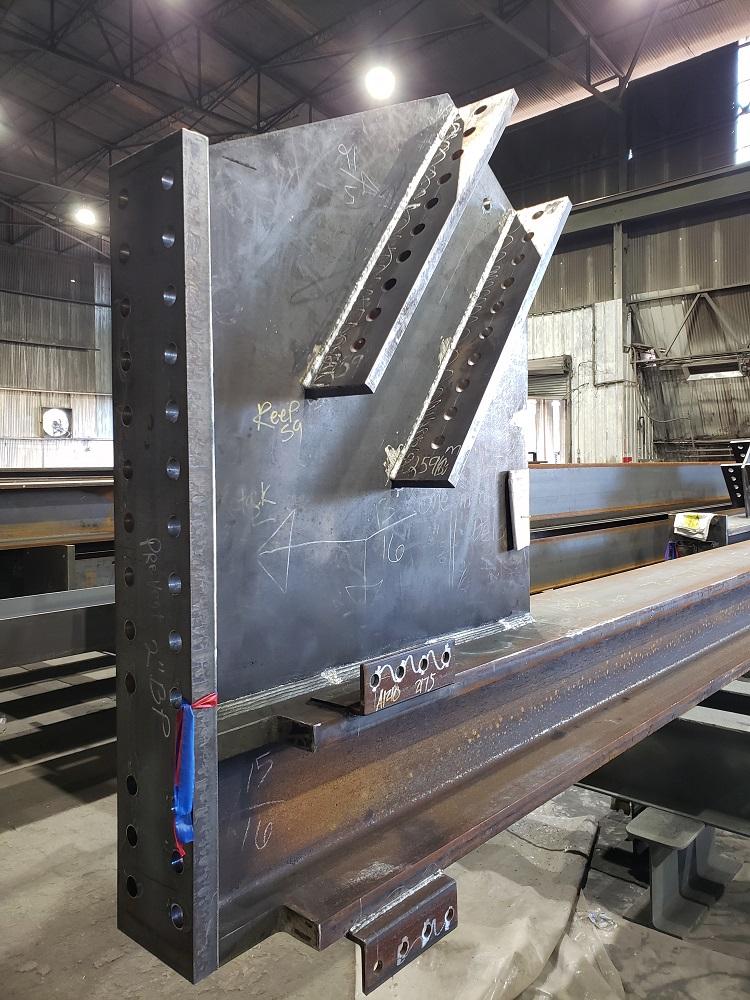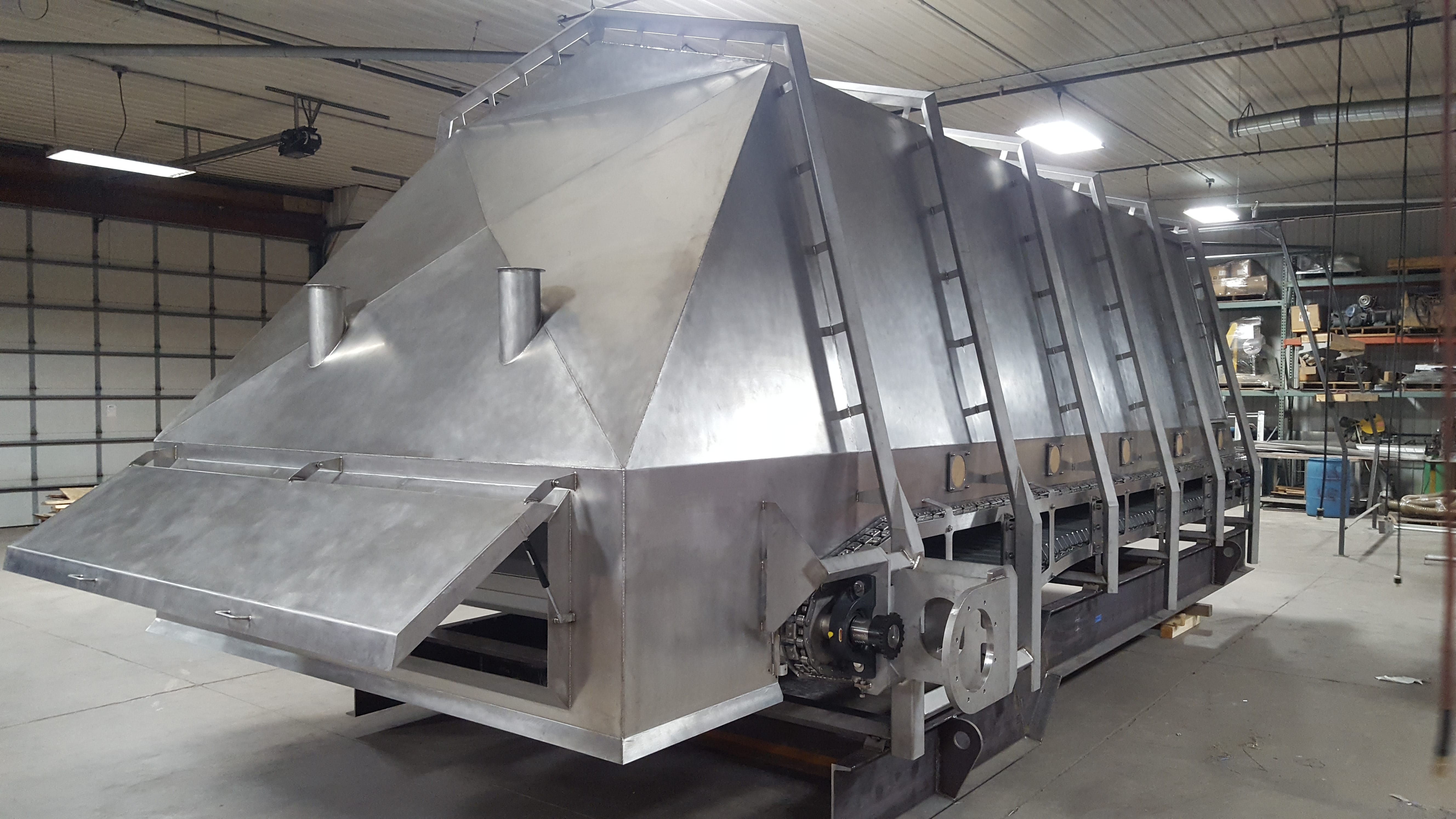Professional Steel Fabricators Melbourne: High Quality You Can Trust Fund
Professional Steel Fabricators Melbourne: High Quality You Can Trust Fund
Blog Article
Innovative Patterns in Steel Construction: Enhancing Longevity and Accuracy
In the world of steel fabrication, the search of resilience and precision has actually led to a wave of ingenious patterns that are improving the industry. From developments in welding technologies to the assimilation of robotic automation in fabrication procedures, the landscape of steel manufacturing is advancing quickly. High-strength alloy growth, paired with the usage of 3D modeling and simulation software, is pushing the limits of what is achievable in terms of architectural honesty and precision. The growing emphasis on sustainable practices in steel production is not just driving efficiency however also promoting a much more eco mindful strategy to manufacture. These fads are not simply shaping the present however likewise laying the groundwork for the future of steel manufacture, promising additional improvements in sturdiness and precision.
Advanced Welding Technologies
In the realm of steel fabrication, the adoption of cutting-edge welding technologies has actually considerably changed the industry's strategy to achieving exceptional top quality and precision in structural welds. Advanced welding technologies, such as laser beam welding and rubbing stir welding, have actually emerged as game-changers in the area. By leveraging these innovative welding methods, steel fabricators can raise the durability, toughness, and precision of their structural welds, fulfilling the increasingly demanding needs of modern-day building jobs.
Robotic Automation in Manufacture
Accepting robotic automation has become a cornerstone of modern-day steel manufacture practices, boosting and streamlining procedures effectiveness across the industry. Robotics are changing the means steel elements are produced, providing unparalleled accuracy and speed while reducing human mistake. These automated systems can handle repeated jobs with constant precision, leading to better final result.
One secret advantage of robot automation in steel construction is the ability to function around the clock without tiredness, significantly boosting production result. This continual operation lessens downtime and speeds up project timelines, ultimately saving expenses for suppliers. Additionally, robots can be configured to execute detailed jobs that might be harmful or difficult for human workers, boosting safety and security in the work environment.
Furthermore, robot automation enables seamless combination with various other digital technologies, such as computer-aided design (CAD) software application and Net of Points (IoT) systems (Alpha reo). This interconnected strategy enhances interaction in between different phases of fabrication, optimizing workflows and making sure real-time surveillance and control. As the steel manufacture market continues to advance, robot automation attracts attention as a transformative force driving effectiveness and precision in making procedures

High-Strength Alloy Development
The development of high-strength alloy growth in steel manufacture is reshaping the industry's strategy to enhancing product toughness and efficiency. High-strength alloys are engineered to exhibit remarkable mechanical properties, such as enhanced tensile toughness, strength, and rust resistance contrasted to standard steel grades. By incorporating these sophisticated alloys into manufacture procedures, manufacturers can produce elements that withstand higher stress levels and rough atmospheres, bring about even more sturdy and trustworthy end items.
One key benefit of high-strength alloy advancement is the capability to decrease material density without jeopardizing architectural integrity. This not only leads to lighter-weight parts yet likewise adds to cost savings and enhanced performance in construction and setting up processes. In addition, the improved strength-to-weight proportion of these alloys permits the style and building of structures with higher load-bearing capabilities while minimizing total weight.
3D Modeling and Simulation Software Application
Developments in steel construction processes have actually been this content significantly driven by the assimilation of sophisticated 3D modeling and simulation software devices. These tools enable fabricators to produce thorough online designs of their tasks, allowing them to envision the end product with accuracy before any physical job begins. By mimicing numerous stress variables, ecological conditions, and structural tons, producers can maximize designs for improved longevity and efficiency. Additionally, 3D modeling and simulation software improve the manufacturing process by determining possible problems at an early stage, lowering the requirement for costly rework and decreasing material waste.

Sustainable Practices in Steel Production
Including sustainable practices into steel manufacturing procedures is necessary for reducing environmental influence and making certain long-term resource schedule. One essential lasting practice is the fostering of energy-efficient innovations to decrease greenhouse gas discharges during the steel production process. This consists of utilizing renewable power resources, such as solar or wind power, to power steel plants and implementing energy-efficient equipment to enhance energy usage.
One more critical facet of lasting steel production is the accountable sourcing of resources. This involves making sure that the iron ore and various other resources made use of in steelmaking are obtained from environmentally pleasant and moral sources. By promoting openness in the supply chain and sticking to strict environmental criteria, steel makers can reduce the adverse effects of source removal on local ecosystems and areas.

Verdict
To conclude, the innovative fads in steel manufacture such as sophisticated welding innovations, robotic automation, click over here now high-strength alloy development, 3D modeling and simulation software program, and sustainable methods are improving the toughness and precision of steel items. These advancements are revolutionizing the steel construction market by enhancing effectiveness, high quality, and sustainability. It is clear that the future of steel construction exists in embracing these innovative modern technologies to satisfy the needs of modern-day building and construction and manufacturing markets.
In the world of steel manufacture, the pursuit of sturdiness and precision has led to a wave of ingenious fads that are improving the sector.In the realm of steel manufacture, the fostering of innovative welding modern technologies has actually dramatically transformed the industry's approach to accomplishing remarkable high quality and accuracy in architectural welds. As the steel construction industry proceeds to develop, robotic automation stands out as a transformative pressure driving performance and precision in making processes.
Moreover, reusing and recycling steel scrap and waste products play a substantial role in boosting the sustainability of steel manufacturing. Alpha reo.In conclusion, the cutting-edge patterns in steel construction such as sophisticated welding technologies, robot automation, high-strength alloy advancement, 3D modeling and simulation software, and sustainable techniques are improving the toughness and precision of steel products
Report this page